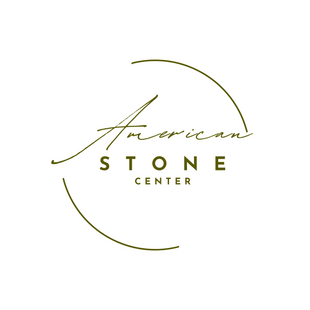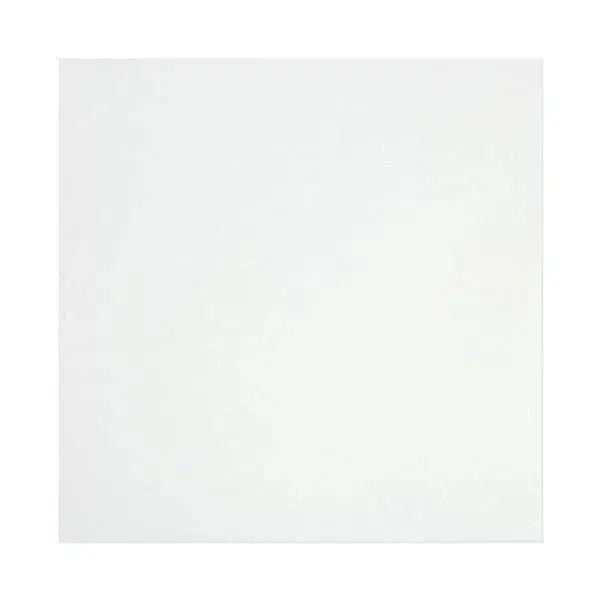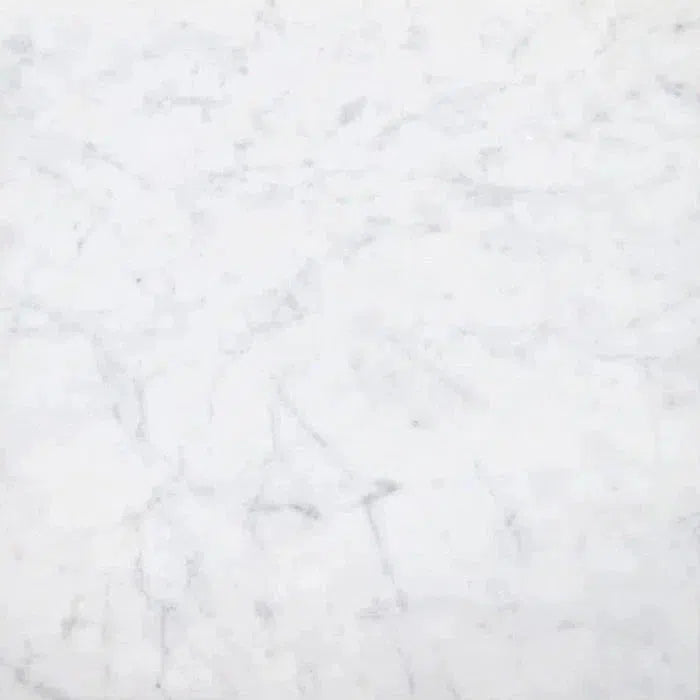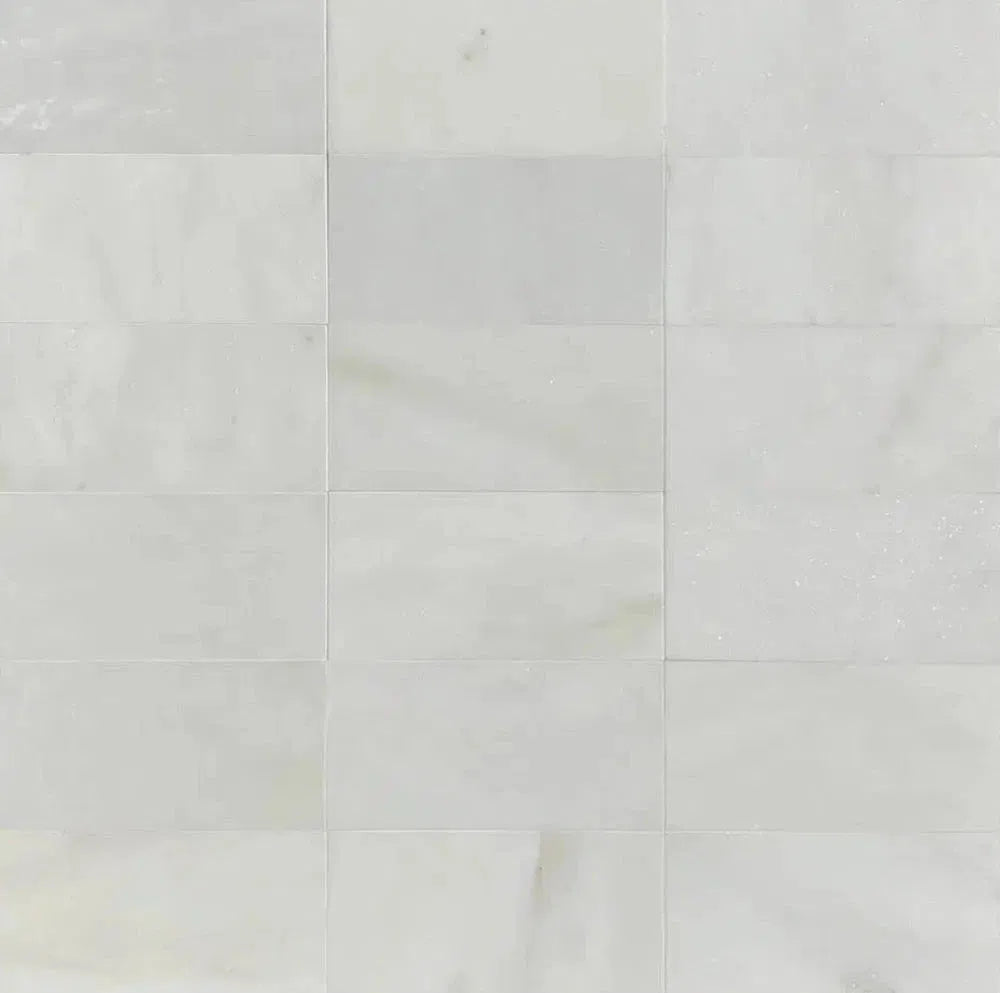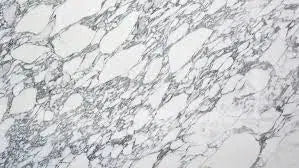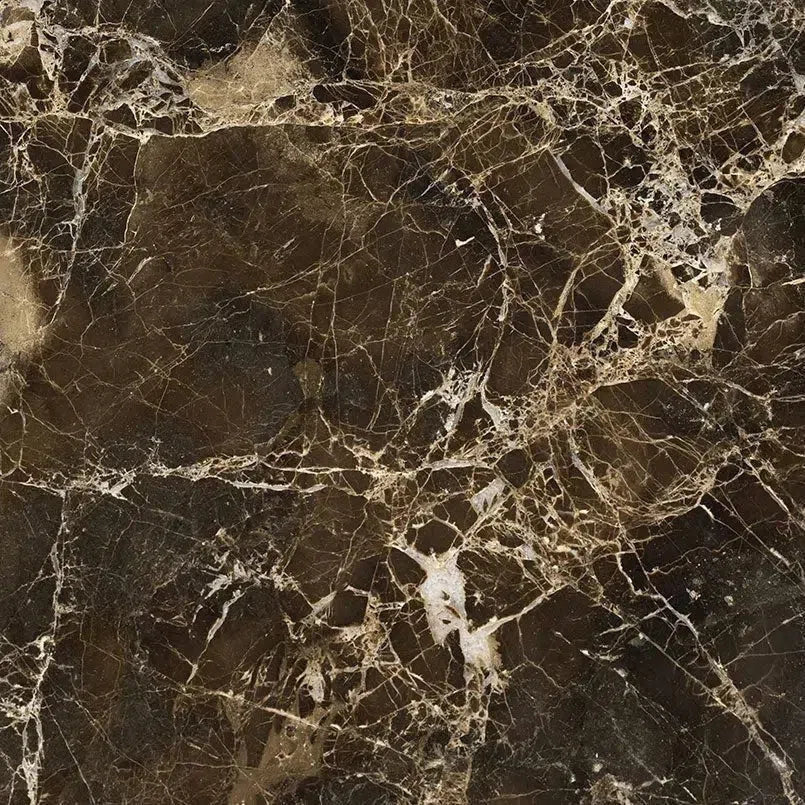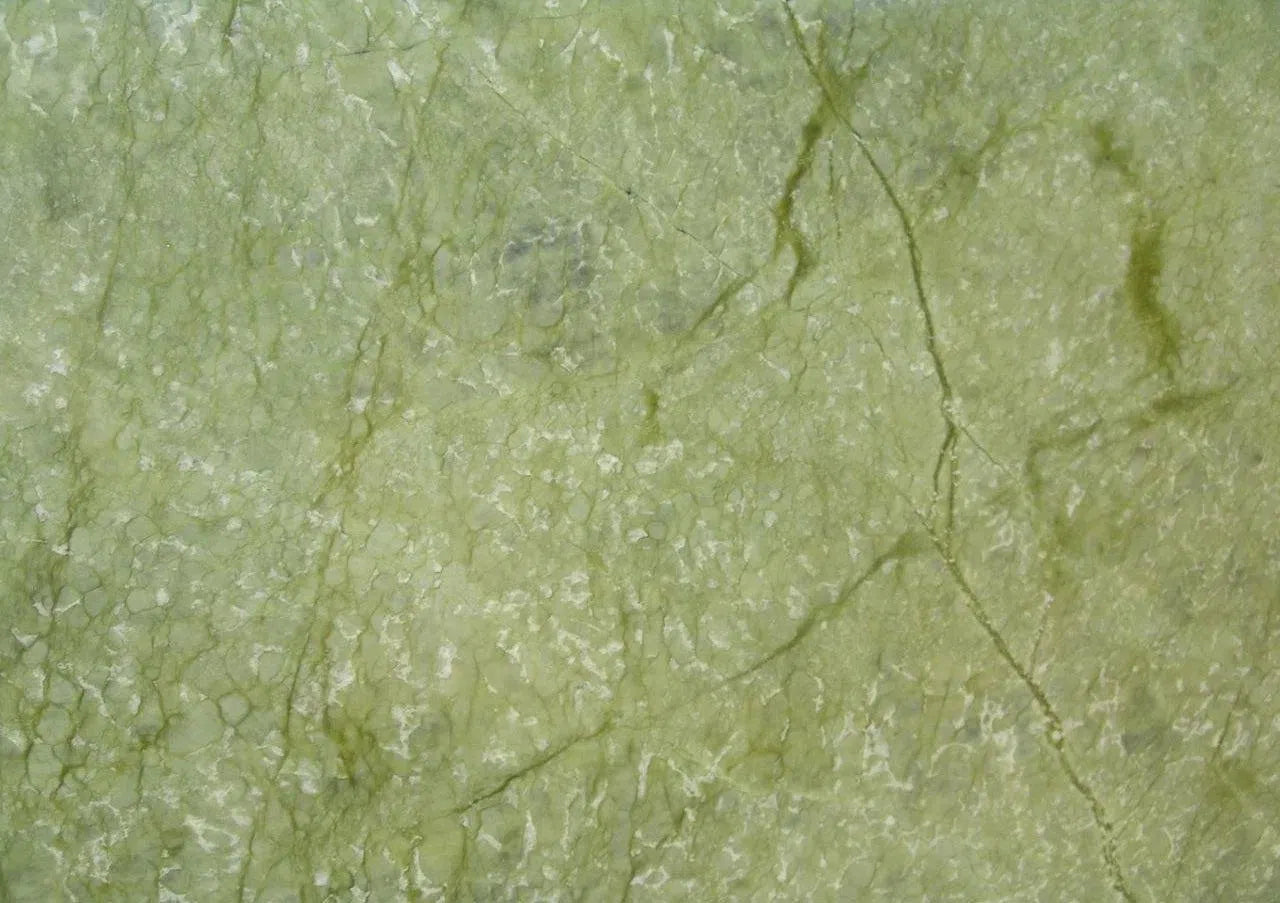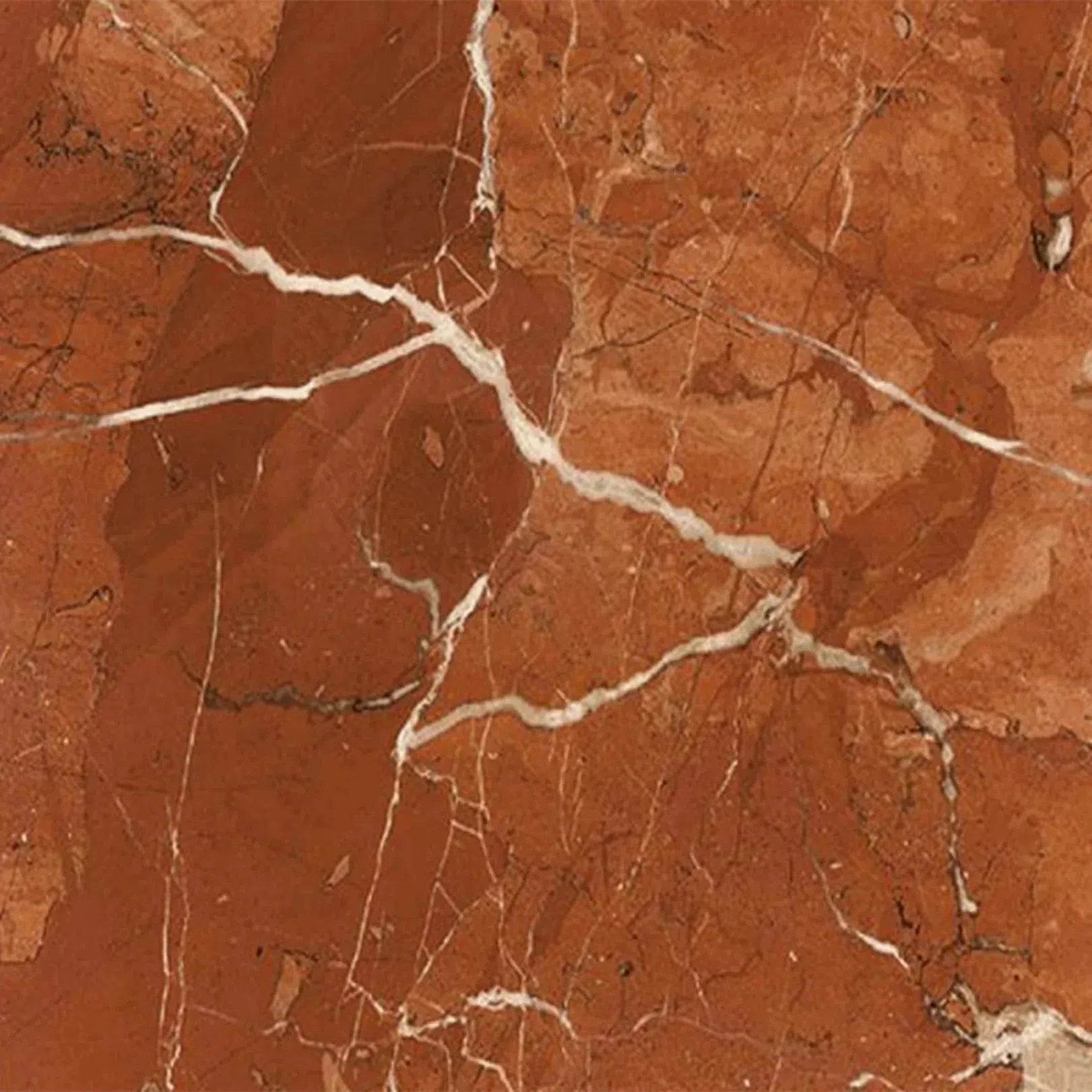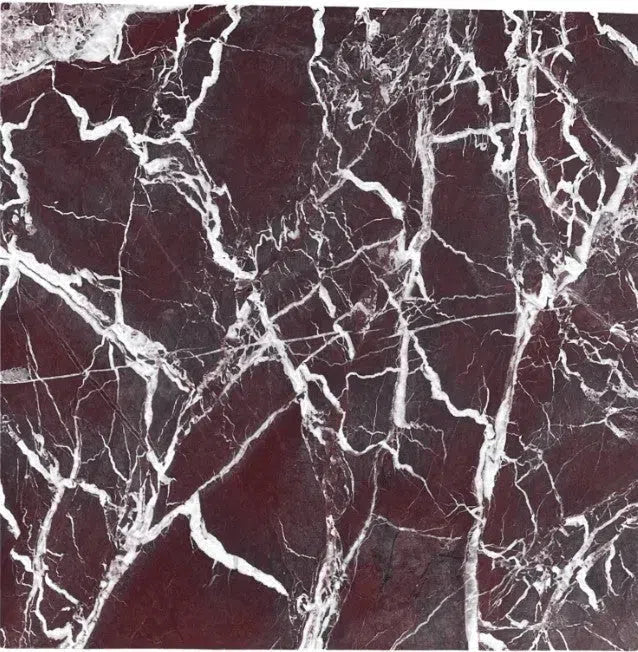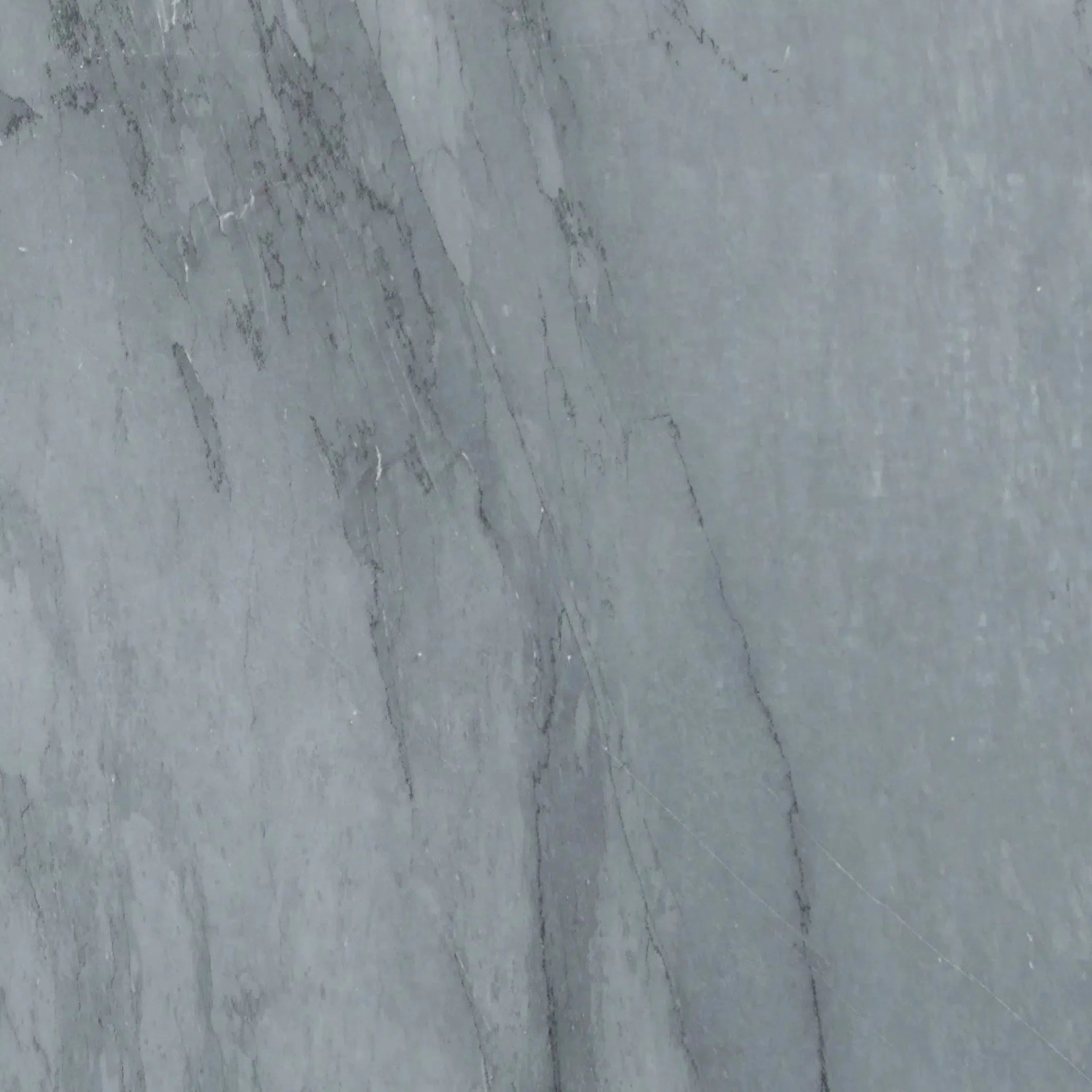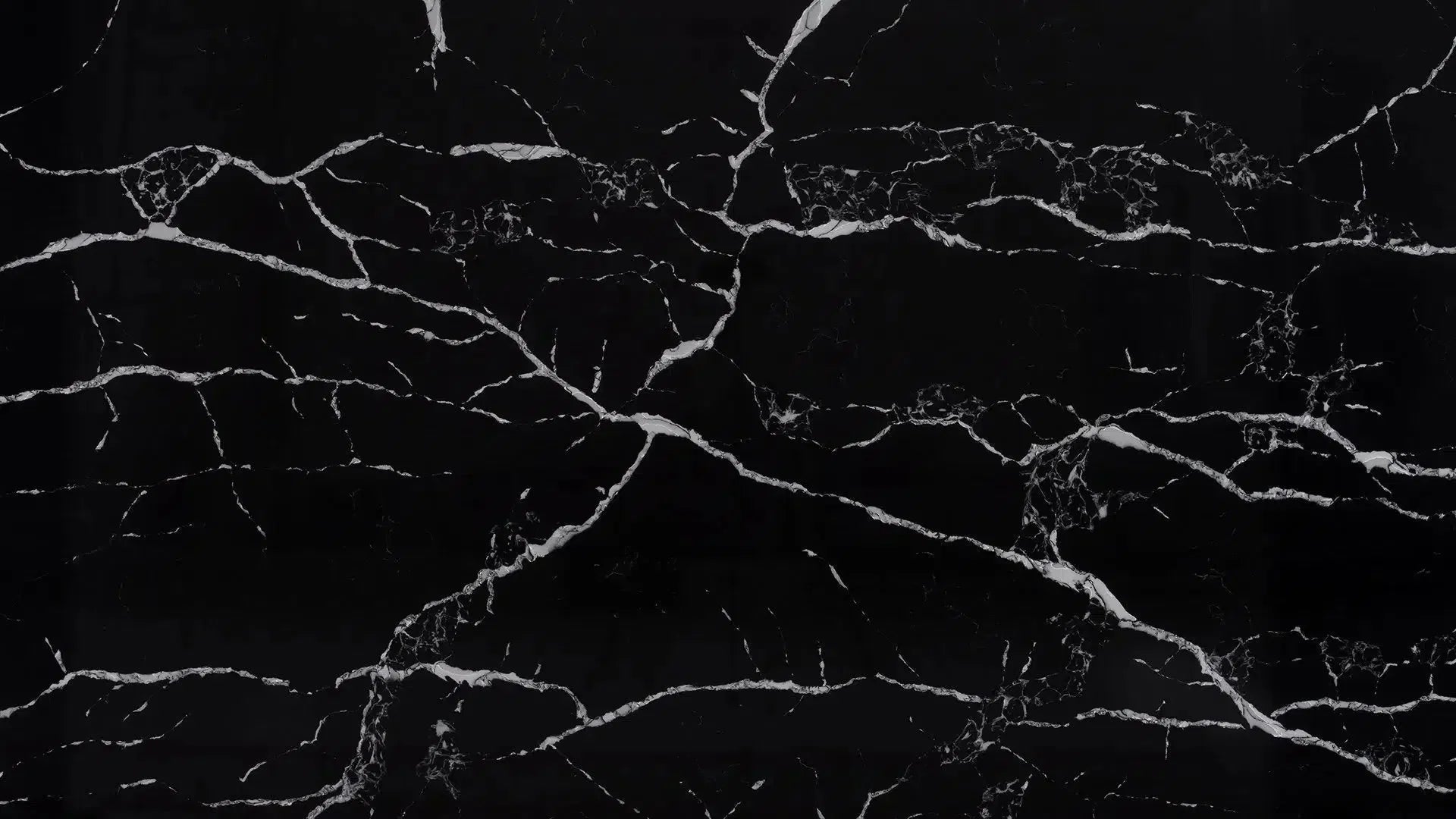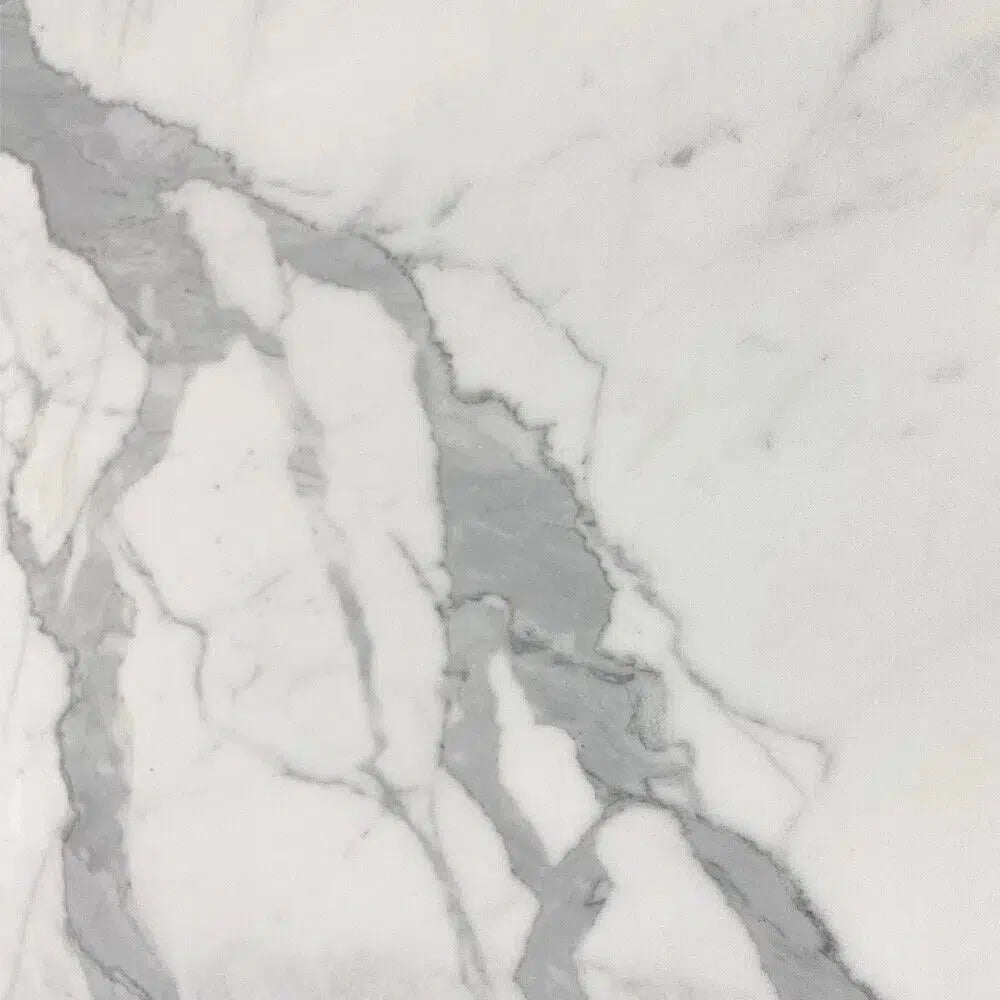Thinking about marble for your next project? It's a beautiful choice, no doubt. But figuring out the cost of marble slab per square foot can feel like a puzzle. There are so many things that go into the price, from where it comes from to how it looks. This guide breaks it all down, so you know exactly what to expect when you're shopping around for that perfect slab.
Key Takeaways
- The cost of marble slab per square foot really changes based on a bunch of things, like the marble's origin, its grade, and even how it looks.
- Famous marble types like Calacatta can be way more expensive than common ones like Carrara.
- Buying straight from a direct importer can cut out the middleman, often leading to better prices for the cost of marble slab per square foot.
- You're paying more for top-quality, handpicked marble, but it usually lasts longer and looks better over time.
- For kitchens and bathrooms, think about more than just the slab cost – fabrication and installation add up.
- Don't forget extra costs like cutting, fitting, shipping, and sealing when calculating the total cost of marble slab per square foot.
- The finish you choose, like polished or leathered, affects both the price per square foot and how you'll need to care for it.
- Slab thickness matters; thicker pieces often cost more per square foot but can be more durable and easier to work with.
Understanding The Cost Of Marble Slab Per Square Foot

So, you're thinking about using marble for your next project? That's fantastic! Marble brings a certain kind of elegance that's hard to beat. But before you fall in love with a particular slab, let's talk about the price tag. Understanding the cost of marble slab per square foot is key to staying on budget and making smart choices. It's not just about the stone itself; a lot goes into that final number you see on the tag.
Factors Influencing Marble Slab Pricing
When you're looking at marble, the price per square foot can swing quite a bit. It’s not a one-size-fits-all situation. Several things play a role, and knowing them helps you figure out why one slab costs more than another. Think of it like buying a car – the base model is one price, but add a few options, and it goes up.
The Impact of Marble Origin on Cost
Where the marble comes from makes a big difference. Some quarries are famous for producing top-tier stone, and that reputation comes with a price. For example, Italian marble, especially from famous regions, often commands higher prices due to its historical significance and consistent quality. Other origins might offer more budget-friendly options, but it's always good to check the quality.
How Marble Grade Affects Per Square Foot Pricing
Just like other natural materials, marble has grades. You'll often see terms like 'commercial grade' versus 'premium' or 'A+' grade. We only offer handpicked A+ top-quality natural stone products; we do not sell commercial grade. Premium grades mean fewer imperfections, better color consistency, and more desirable veining, all of which drive up the cost. Commercial grade might be cheaper, but it often comes with more natural variations and potential issues.
The Role of Veining and Pattern in Marble Costs
This is where the artistry of nature really shows. Marble with dramatic, unique, or perfectly symmetrical veining patterns is often more sought after and, therefore, more expensive. If a slab has a particularly striking pattern that designers and homeowners love, expect to pay a premium for that visual appeal. Sometimes, the rarity of a specific pattern can also influence its price significantly.
Understanding Slab Thickness and Its Cost Implications
Marble slabs come in different thicknesses, usually 2cm or 3cm. Thicker slabs, like 3cm, are generally more durable and can sometimes be fabricated with more complex edge profiles. This added thickness and potential for more intricate work means they usually cost more per square foot than their thinner counterparts. It’s a trade-off between cost and perceived sturdiness.
The Influence of Finish on Marble Slab Price
The finish you choose also impacts the price. A standard polished finish, which gives that high-gloss look, is common and usually included in the base price. However, specialty finishes like leathered, tumbled, or brushed can add to the cost. These finishes require extra steps in the fabrication process, contributing to a higher per-square-foot price. Each finish also affects how the marble looks and feels, so it's a choice that balances aesthetics with budget.
Exploring Different Marble Types And Their Associated Costs
When you're looking at marble slabs, it's not just about the square footage; the type of marble itself plays a huge role in the price. Think of it like choosing a car – a basic sedan is one price, but a luxury sports car is another. Marble is similar, with different varieties offering unique looks and, consequently, different price tags. Understanding these differences can help you find the perfect stone that fits both your aesthetic and your budget for your U.S. projects.
Carrara Marble: Classic Elegance and Value
Carrara marble is probably the most well-known type, hailing from Italy. It's famous for its soft white background and subtle, often feathery gray veining. Because it's widely available, it tends to be one of the more affordable options. This makes it a great choice if you love the look of marble but are working with a tighter budget. You get that classic, timeless marble feel without breaking the bank. It's a solid pick for many applications, from countertops to flooring.
Calacatta Marble: The Pinnacle of Luxury Pricing
Calacatta marble is another Italian beauty, but it's a different beast altogether. Unlike Carrara's soft grays, Calacatta typically features bold, dramatic veining in shades of gold, brown, or black against a whiter background. This striking contrast makes it highly sought after, and that demand drives up the price. Calacatta is often considered a premium, luxury material, and its cost per square foot reflects that exclusivity. If you're aiming for a high-impact statement piece, Calacatta might be your stone, but be prepared for the investment.
Emperador Marble: Rich Tones and Their Cost
Emperador marble, often from Spain, brings a warmer palette to the table. It's characterized by its rich brown tones, ranging from light to dark chocolate, often interspersed with creamy white or beige veining. This deep, earthy look is fantastic for creating cozy, sophisticated spaces. While not as expensive as some of the high-end white marbles, its unique color can place it in a mid-to-high price range, depending on the intensity and pattern of the veining.
Crema Marfil Marble: Warm Hues and Budget Considerations
Crema Marfil is another popular Spanish marble, known for its creamy, light beige background with subtle, delicate veining in shades of white or light brown. It offers a warm, inviting feel and is quite versatile. Because it's relatively abundant and has a softer appearance, it's often more budget-friendly than marbles with dramatic veining or stark white backgrounds. It's a great option for homeowners looking for a natural stone that feels elegant but doesn't demand a top-tier price.
Statuary Marble: Dramatic Veining and Investment
Similar to Calacatta, Statuary marble is another Italian classic known for its dramatic veining. The key difference lies in the background color and veining pattern. Statuary often has a brighter white background with strong, dark, columnar veins that run through the slab. This creates a very sculptural and artistic look. Like Calacatta, its dramatic appearance makes it a premium choice, and you can expect a higher cost per square foot. It's an investment in a truly statement-making material.
Unique Marble Varieties and Their Premium Pricing
Beyond these common types, there are countless other marble varieties quarried worldwide, each with its own unique color, pattern, and price point. Think of marbles with unusual colors like deep greens, blues, or even reds, or those with exceptionally rare and intricate veining patterns. These unique stones are often much harder to find, making them rarer and, therefore, more expensive. If you're looking for something truly one-of-a-kind for your home, these special varieties offer that, but they come with a premium price tag. For example, some exotic marbles can easily exceed $100 per square foot, sometimes much more, depending on rarity and origin. When considering these, it's wise to get multiple quotes to understand the market value for these unique stones.
The Direct Importer Advantage For Marble Slab Pricing
When you're looking to buy marble slabs for your project, you might notice a big difference in prices from one place to another. A lot of this comes down to how the stone gets from the quarry to your home. Buying directly from an importer can really change the game for your budget and the quality you receive. It cuts out a lot of the usual steps, which usually means better prices for you.
Eliminating Middlemen for Better Value
Think about it like buying produce. If you buy directly from the farmer's market, you're likely getting a better deal than if you bought the same fruit from a fancy grocery store across town. The same applies to marble. When a company imports stone directly from quarries around the world, they cut out the wholesalers, distributors, and other intermediaries. This means fewer markups along the way. The savings from these eliminated steps are often passed directly on to you, the customer. This direct import advantage is a big reason why you can get premium quality marble without the premium price tag.
Ensuring Authenticity Through Direct Sourcing
When you buy from a direct importer, you're often getting a more authentic product. They have relationships with the quarries, so they know where the stone is coming from and that it's genuine. This is important because the market can sometimes have stones that are misrepresented. A direct importer can tell you the exact origin of your marble, giving you confidence in its quality and uniqueness. It's about knowing you're getting the real deal, straight from the source.
Consistency in Quality from Quarry to Home
Direct importers often have a closer relationship with the quarries they work with. This means they can have a say in the selection process, picking out the best slabs that meet their quality standards. They aren't just buying whatever is available; they are handpicking the material. This focus on quality control from the very beginning helps ensure that the marble you receive is consistent in color, veining, and overall appearance. It’s a commitment to providing you with beautiful, reliable stone for your U.S. projects.
How Direct Import Affects The Cost Of Marble Slab Per Square Foot
The impact on cost is pretty straightforward. Each step in the traditional supply chain adds a percentage to the final price. By removing these steps, direct importers can offer marble at a lower cost per square foot. This doesn't mean the marble is lower quality; it means you're paying for the stone itself, not for a series of markups. For example, you might see a significant difference in the estimated cost of marble countertops for 2025-26 when comparing a direct importer to a traditional retailer.
Access to Exclusive Marble Selections
Because direct importers work closely with quarries, they often get access to unique and exclusive marble selections that might not be available through other channels. They can source special colors, rare veining patterns, or specific types of marble that stand out. This gives you the chance to find something truly special for your home or commercial space, something that isn't seen everywhere. It’s a way to bring a touch of the extraordinary into your design.
The Benefits of Direct Relationships with Quarries
Having direct relationships means importers can often secure better pricing from the quarries. They might buy in larger volumes or have long-standing agreements that benefit them. This also allows for better communication about availability and new finds. When you work with a direct importer, you're benefiting from these established connections. It's a more streamlined process that ultimately leads to better value and a wider selection for you. Plus, many direct importers offer fast, reliable, and often same-day shipping, making the process even smoother.
Premium Quality Marble: Investing In Lasting Beauty
When you're looking at marble slabs, especially for a project that needs to stand the test of time and look good doing it, the quality of the stone itself really matters. It’s not just about picking a pretty pattern; it’s about investing in something that will last.
Why Handpicked A+ Top-Quality Marble Matters
Think of it like buying a piece of art. You want the best canvas, the richest pigments, and the most skilled artist. With marble, A+ top-quality means the stone has fewer natural imperfections, a more consistent color, and a more desirable veining pattern. This isn't just about looks; it's about structural integrity and how the stone will perform over years of use. We don't sell commercial grade material; every slab we offer is handpicked to be premium quality, ensuring you get a piece that truly shines.
The Difference Between Premium and Commercial Grade
Commercial grade marble is often chosen for high-traffic areas where durability and cost are the main concerns, and aesthetics might take a backseat. It can have more natural fissures, color variations, or less striking veining. Premium grade, on the other hand, is selected for its superior appearance and fewer natural flaws. It's the kind of marble that makes a statement, whether it's for marble countertops of a refined quality or a grand fireplace surround. You're paying for a higher standard of beauty and a more reliable material.
The Long-Term Value of High-Quality Marble
While premium marble might have a higher upfront cost per square foot, its longevity and enduring beauty offer significant long-term value. High-quality marble is less prone to chipping, staining, or cracking when properly cared for. This means fewer repairs, less frequent replacement, and a surface that continues to impress for decades. It's an investment in your property's aesthetic appeal and value.
Assessing Marble Quality for Your Investment
When you're looking at slabs, pay attention to a few things. First, the color consistency – are there large, jarring shifts, or is it a smooth transition? Second, the veining – is it well-defined and attractive, or does it look muddy or broken? Check for any visible cracks or fissures, especially on the edges. A good supplier will be transparent about the quality and origin of their stone.
The Craftsmanship Behind Premium Marble Slabs
It's not just the quarrying; the way the slab is cut and finished also plays a role. Premium slabs are often cut with more precision, and the finishing process is meticulous. This attention to detail ensures that the final product is not only beautiful but also ready for fabrication and installation without issues. It’s this dedication to quality from quarry to slab that sets premium marble apart.
Choosing Marble That Endures for Generations
Selecting premium marble is about more than just current trends; it's about choosing a material that can become a family heirloom. Whether you're envisioning Statuario marble countertops for a show-stopping kitchen or a refined marble floor, investing in top-quality stone means you're building something beautiful that will be admired for years to come. It’s a choice that speaks to lasting elegance and enduring value.
Navigating The Cost Of Marble Slab Per Square Foot For Kitchens
Thinking about marble for your kitchen? It's a fantastic choice, bringing timeless beauty and a touch of luxury right into the heart of your home. But let's talk about the cost. Understanding the price per square foot for kitchen applications is key to budgeting and making informed decisions. Several factors come into play, from the type of marble itself to how it's prepared for your space.
Countertop Considerations and Pricing
Kitchen countertops are probably the most common use for marble slabs, and they often represent a significant portion of the overall cost. The price per square foot can vary widely based on the marble's origin, rarity, and the complexity of the slab's veining. For premium, handpicked A+ top-quality marble, expect prices to reflect its superior nature. While commercial-grade marble might seem cheaper, it doesn't offer the same durability or aesthetic appeal that homeowners and designers seek for U.S. projects.
Backsplash Marble Slab Cost Breakdown
Backsplashes are a great way to add marble's elegance without the same investment as countertops. The cost here is generally lower simply because less material is needed. However, the price per square foot of the slab itself remains consistent with the material chosen. Consider how the pattern and veining will flow from your countertops onto the backsplash for a cohesive look.
Island Slab Pricing Dynamics
Kitchen islands often become a focal point, and designers frequently opt for statement marble slabs here. This can sometimes mean a higher cost per square foot, especially if a particularly dramatic or rare pattern is chosen. The size of the island also plays a role; larger islands might require more complex cuts or multiple slabs, potentially impacting waste and overall expense.
Edge Profiles and Their Impact on Kitchen Marble Costs
The edge profile you choose for your countertops and island can add to the final cost. Simple eased or straight edges are typically included in the basic fabrication cost. However, more intricate profiles like ogee, bullnose, or custom designs require more labor and specialized tools, increasing the per-linear-foot cost. This is an area where you can customize the look and feel, but it does come with an added expense.
Sealing and Maintenance Costs for Kitchen Marble
Marble is a porous natural stone, and for kitchen use, sealing is highly recommended to protect against stains and etching. While the initial sealing might be part of the fabrication or installation package, it's a maintenance task that will need to be repeated periodically. Factor in the cost of professional sealing or the DIY materials for ongoing care. Proper care is key to maintaining the beauty and value of your marble investment over time.
Calculating Total Kitchen Marble Project Expenses
When budgeting for your kitchen marble, remember to look beyond just the slab cost per square foot. You'll need to account for:
- Slab Material: The base cost per square foot.
- Fabrication: Cutting, shaping, and edge profiling.
- Installation: Professional fitting in your kitchen.
- Sealing: Initial treatment and ongoing maintenance.
- Edge Profile: Additional cost for decorative edges.
- Sink Cutouts: Specific pricing for sink openings.
By considering all these elements, you can get a more accurate picture of the total investment for stunning marble in your kitchen.
Bathroom Marble Slab Costs: Luxury And Practicality
When it comes to bathrooms, marble brings a touch of timeless elegance and a feeling of luxury that's hard to match. But what about the cost? Understanding the price per square foot for bathroom marble slabs is key to planning your project, whether you're dreaming of a spa-like retreat or a sleek, modern powder room. The good news is that marble can be more accessible than you might think, especially for smaller spaces like bathrooms.
Vanity Top Marble Slab Pricing
Your vanity top is often the centerpiece of a bathroom, and marble makes it shine. The cost for marble vanity tops can vary widely, but generally, you're looking at a range that reflects the material's beauty and durability. For a standard marble vanity top, prices can start around $40 to $60 per square foot, though this can climb significantly for rarer types or more intricate designs. This price often includes the material and basic fabrication. Keep in mind that custom shapes or integrated sinks might add to the overall expense. For a more specific idea, some sources suggest that remodeling a bathroom with marble countertops can cost between $50 to $130 per square foot, including professional installation [2732].
Shower Wall Marble Slab Cost Analysis
Marble shower walls create a truly luxurious experience. The cost here depends on the type of marble, the size of the slabs, and the complexity of the installation. For a high-end look, you might consider premium options like Calacatta marble, which can start around $180 per square foot [d2af]. However, more budget-friendly options are available. When calculating the cost, remember to factor in the labor for cutting, fitting, and sealing the marble to ensure it holds up well in a wet environment.
Flooring Marble Slab Considerations
Marble flooring in a bathroom adds significant value and aesthetic appeal. The price per square foot for marble flooring is generally in line with countertop pricing, but installation can be more labor-intensive. You'll want to choose a marble that is durable and not too slippery when wet. Consider the overall square footage of your bathroom floor to get an accurate estimate. For smaller bathrooms or powder rooms, marble flooring can be a surprisingly cost-effective way to introduce this natural stone.
Accent Wall Marble Slab Investment
An accent wall clad in marble can be a stunning focal point. This application often uses smaller slabs or even tiles, which can sometimes be more economical than large slabs for countertops or floors. The visual impact, however, is immense. The cost will depend on the marble chosen and the complexity of the wall design. This is a great way to incorporate marble's beauty without a massive budget.
Water Resistance and Marble Cost Factors
Marble is a natural stone and, while beautiful, it's porous. This means it can absorb liquids, leading to stains or etching if not properly sealed and maintained. The cost of sealing and regular maintenance should be factored into your overall budget. High-quality sealants and professional cleaning can help protect your investment and keep your marble looking its best for years to come. Proper care is key to long-term value.
Budgeting for Luxurious Bathroom Marble
When budgeting for your bathroom marble project, it's wise to get quotes from several suppliers and fabricators. Consider the total square footage needed, the specific type of marble, the desired finish, and the complexity of the installation. Don't forget to include costs for fabrication, installation, and ongoing maintenance. Remember, while the initial cost might seem high, the lasting beauty and durability of marble can make it a worthwhile investment for your home.
- Vanity Tops: Typically the most common marble application in bathrooms.
- Shower Walls: Can be a significant cost but offer a high-impact luxury feel.
- Flooring: Adds elegance but requires careful consideration for slip resistance and maintenance.
- Accent Walls: A more budget-friendly way to add marble's charm.
Always request samples to see the marble in your bathroom's lighting before making a final decision. This helps avoid surprises and ensures you get the look you want. You can even order a sample through our website to get started [2732].
Beyond The Slab: Additional Costs To Consider
So, you've picked out the perfect marble slab – beautiful veining, just the right color. That's fantastic! But before you get too excited, it's important to remember that the price you see for the slab itself is just one piece of the puzzle. There are several other costs that come into play once you move beyond just the raw material.
Fabrication Fees: Cutting and Shaping Marble
This is where your slab starts to take shape. Fabrication involves cutting the marble to your specific dimensions, creating edge profiles (like bullnose, eased, or ogee), and making cutouts for sinks or cooktops. The complexity of the design and the number of cuts needed will directly impact this cost. For example, intricate edge profiles or precise cutouts for specialized appliances will naturally cost more than a simple straight edge. It's a skilled process, and the artisans doing the work need to be precise to avoid wasting expensive material.
Installation Services: Professional Placement
Getting that heavy, beautiful marble into your home and installed correctly is a job for professionals. Installation costs cover the labor involved in transporting the fabricated pieces to your site, fitting them precisely, and securing them in place. This is especially important for countertops and flooring where a perfect fit is key for both aesthetics and function. The difficulty of the installation, such as working in a tight space or on an upper floor, can also affect the price. Remember, improper installation can lead to issues down the line, so this is not an area to skimp on.
Transportation and Shipping Expenses
Marble slabs are heavy and require specialized handling and transportation. Whether you're picking them up yourself (which is often not recommended for large slabs) or having them shipped, there will be costs involved. These can include freight charges, insurance for transit, and potentially special equipment for loading and unloading. If you're ordering from a supplier across the country, these shipping costs can add up significantly. Many suppliers offer nationwide shipping, but it's always wise to get a clear quote upfront.
Sealing and Protection Treatments
Marble is a porous natural stone, and to protect it from stains and etching, it needs to be sealed. This process involves applying a protective sealant to the surface. While some suppliers might include a basic sealing in their price, others charge extra. You'll also need to consider the cost of ongoing sealing and maintenance throughout the life of your marble. This is a vital step to keep your marble looking its best for years to come.
Potential Costs for Custom Designs
If you have a unique vision that goes beyond standard countertops or flooring, be prepared for custom design fees. This could involve intricate inlays, unique mosaic patterns, or specially shaped pieces for architectural features. The more custom work involved, the higher the fabrication and design costs will be. It's always a good idea to discuss your custom ideas early with your supplier to get an accurate estimate.
Contingency Funds for Unexpected Issues
It's just good practice in any renovation project to set aside a little extra money for the unexpected. Sometimes, during fabrication or installation, a small chip might occur, or a measurement might be slightly off. Having a contingency fund of about 10-15% of your total project cost can save you a lot of stress if minor issues arise. This buffer helps ensure your project stays on track without derailing your budget entirely.
Maximizing Value When Purchasing Marble Slabs
Buying marble slabs can feel like a big investment, and you want to make sure you're getting the most bang for your buck. It’s not just about the sticker price per square foot; it’s about the overall value and how the stone performs in your project. Luckily, there are smart ways to approach this purchase to ensure you get beautiful, lasting marble without overspending.
Comparing Quotes for The Best Price
Don't just settle for the first price you see. It’s really important to shop around. Get quotes from a few different suppliers, especially if you're looking for specific types of marble. This helps you understand the market rate and can sometimes reveal better deals. When you get quotes, make sure they're for comparable quality and thickness. A super low price might mean lower quality, so always check the details. For example, marble countertops in areas like Sterling, VA, can have a wide price range, so comparing is key marble countertops in Sterling, VA.
Understanding Slab Yield and Minimizing Waste
This is a big one that many people overlook. Slab yield refers to how much usable material you can get from a single slab after it's cut for your project. Larger, more complex cuts or pieces with significant veining that need careful placement can lead to more waste. Discussing the layout with your supplier or fabricator beforehand can help maximize the yield. Choosing slabs with patterns that work well with your project dimensions can significantly reduce costs.
Leveraging Sales and Promotions
Keep an eye out for special offers. Sometimes suppliers have seasonal sales, clearance events, or promotions on specific types of marble. While you shouldn't buy something you don't love just because it's on sale, if you've been eyeing a particular stone, waiting for a promotion can lead to nice savings.
The Importance of Sample Requests Before Buying
Always, always ask for samples. Photos online can be deceiving. Seeing and touching a sample in your own lighting conditions is the best way to confirm the color, veining, and overall look. It also helps you avoid costly mistakes. Many reputable suppliers, like us, offer samples so you can be confident in your choice order a sample.
Building Relationships with Trusted Suppliers
Over time, developing a good relationship with a reliable marble supplier can pay off. They might offer you early access to new selections, better pricing on future purchases, or personalized advice. Trustworthy suppliers are committed to providing quality stone and honest service.
Long-Term Cost Savings Through Durability
When you focus solely on the initial price per square foot, you might miss out on the bigger picture. Investing in higher-quality, durable marble might cost more upfront, but it will last much longer and require fewer repairs or replacements down the line. This makes it a more cost-effective choice over the lifespan of your project. Premium, handpicked A+ top-quality stone is built to endure, unlike commercial-grade materials that can show wear more quickly.
The Role Of Finish In Marble Slab Cost Per Square Foot
The finish you choose for your marble slabs plays a surprisingly big role in both the look and the final price per square foot. It's not just about aesthetics; the way a slab is treated affects its durability, maintenance needs, and ultimately, how much you'll pay. Let's break down the common finishes and what they mean for your budget.
Polished Finish: Reflective Brilliance and Cost
A polished finish is what most people picture when they think of marble. It's super smooth, highly reflective, and really makes the colors and veining pop. This finish is achieved by using progressively finer abrasives until the surface is mirror-like. Because it takes more time and effort to achieve this high gloss, polished marble often comes with a higher price tag per square foot. It's a classic choice for countertops and statement pieces where you want that luxurious shine.
Honed Finish: Matte Elegance and Pricing
If a high shine isn't your style, a honed finish offers a softer, more muted look. It's essentially a polished surface that has been further abraded to remove the gloss, resulting in a smooth, matte appearance. This finish is less reflective, which can hide minor imperfections and fingerprints better than a polished surface. Honed marble is generally a bit less expensive than polished because it requires less intensive finishing. It's a great option for floors, walls, and areas where glare might be an issue.
Tumbled Finish: Rustic Charm and Its Value
For a more aged, rustic feel, a tumbled finish is the way to go. This process involves putting the marble in a machine with other materials to chip and soften the edges, giving it a worn, antique look. It's a more labor-intensive process, but the resulting texture and character can add significant charm. While not always the cheapest option, the unique aesthetic can be worth the investment for specific design styles.
Leathered Finish: Textured Sophistication
The leathered finish has gained popularity for its unique texture. It's created by using special brushes to create a slightly uneven, soft, textured surface that feels almost like leather. This finish is excellent at hiding water spots and fingerprints, making it a practical choice for busy kitchens and bathrooms. The specialized tools and process required can place leathered marble at a higher price point compared to simpler finishes.
Specialty Finishes and Their Premium Pricing
Beyond the common options, there are various specialty finishes like brushed, sandblasted, or antiqued. These often involve unique techniques to create distinct textures and appearances. Because they are less common and require specialized equipment or more labor, these finishes typically command a premium price. They are best suited for projects where a truly unique look is desired and the budget allows for it.
How Finish Affects Maintenance and Long-Term Cost
Choosing a finish isn't just about the upfront cost; it also impacts long-term care. Polished marble, while beautiful, can show etching and scratches more easily and may require more frequent professional cleaning. Honed and leathered finishes tend to be more forgiving in daily use. While the initial cost of a specialty finish might be higher, consider how its durability and ease of maintenance will affect your overall expenses over the lifespan of your marble. For example, black marble tile installations can vary significantly in cost depending on the finish chosen, impacting both initial outlay and upkeep.
Understanding Marble Slab Thickness And Its Cost
When you're looking at marble slabs, thickness is a big deal, and it definitely plays a role in how much you'll pay per square foot. It's not just about how heavy the slab is; it affects durability, how it's installed, and even how it looks.
Standard Slab Thicknesses Explained
Most marble slabs you'll find come in two standard thicknesses: 2cm (about 3/4 inch) and 3cm (about 1 1/4 inch). These are the most common because they work well for most applications, especially countertops and flooring. Thinner slabs, like 1cm, are sometimes used for wall cladding or decorative elements, but they're less common for heavy-duty use.
The Cost Difference Between 2cm and 3cm Slabs
Generally, a 3cm slab will cost more per square foot than a 2cm slab of the same marble. This isn't just because there's more stone; thicker slabs are often more challenging to quarry, transport, and handle. They also offer greater structural integrity. For example, a beautiful white marble might be priced at $50/sq ft for 2cm thickness, but jump to $70/sq ft for the 3cm version. This difference accounts for the extra material and the increased handling required.
Thicker Slabs for Enhanced Durability
If you're planning on using marble in a high-traffic area, like a busy kitchen countertop or a frequently used bathroom vanity, a thicker slab offers better durability. A 3cm slab is less likely to chip or crack under stress compared to a 2cm slab. This added resilience means it can withstand daily wear and tear more effectively, potentially saving you money on repairs down the line. For active kitchens, marble countertops are a popular choice, and opting for a thicker slab can be a wise investment marble countertops.
Impact of Thickness on Fabrication Complexity
Working with thicker marble slabs can be more complex for fabricators. Cutting, shaping, and polishing a 3cm slab requires more specialized tools and a bit more time than working with a 2cm slab. This increased labor and equipment need can also contribute to the higher overall cost. For instance, intricate edge profiles or cutouts might be more straightforward and less costly to execute on a thinner slab, but the added strength of a thicker slab might be worth the fabrication expense for certain projects.
Choosing The Right Thickness for Your Application
Your choice of thickness should really depend on what you're using the marble for. For wall tiles or decorative accents, 2cm might be perfectly fine. For kitchen countertops, shower walls, or flooring that sees a lot of foot traffic, 3cm is often the preferred choice for its strength and longevity. If you're looking for marble for flooring in Hyderabad, you might find options like 18 mm (which is close to 2cm) priced around ₹220 per square foot white marble slabs in Hyderabad.
How Thickness Influences The Cost Of Marble Slab Per Square Foot
To sum it up, thickness is a direct cost driver. You're paying for more material, increased handling and transportation costs, and potentially more complex fabrication. While a 3cm slab might have a higher upfront cost per square foot, its enhanced durability and aesthetic presence can make it a more cost-effective choice in the long run, especially for demanding applications. Always discuss your project needs with your supplier to determine the best thickness for both your budget and your desired outcome.
Global Quarry Origins And Their Price Influence
The origin of your marble slab plays a significant role in its final cost. Different quarries around the world are known for specific types of marble, each with its own characteristics, rarity, and associated price point. Understanding these origins can help you make a more informed decision for your U.S. projects.
Italian Marble Quarries: A Benchmark for Quality
Italy has long been synonymous with high-quality marble, particularly from regions like Carrara. This marble is often characterized by its fine grain, classic white or grey background, and elegant veining. Because of its reputation and consistent quality, Italian marble often commands a premium price. It's a popular choice for luxury homes and commercial spaces across the nation.
Greek Marble: Historical Significance and Cost
Greece boasts a rich history of marble quarrying, with stones like Thassos (a pure white marble) and Volakas being highly sought after. Greek marble often features distinct patterns and colors, sometimes offering a more dramatic look than its Italian counterparts. While still a premium material, certain Greek varieties can offer a different aesthetic at a competitive price point compared to some Italian options.
Turkish Marble: Diverse Options and Pricing
Turkey is a major global supplier of marble, offering a wide spectrum of colors and patterns. From creamy beige tones like Crema Marfil to more exotic options, Turkish quarries provide a broad range of choices. This diversity means you can often find marble to fit various budgets, making it a flexible option for designers and homeowners alike. The sheer volume of production can also contribute to more accessible pricing for some types.
Indian Marble: Unique Colors and Affordability
India is known for its unique marble varieties, including Makrana marble, famous for its purity and durability. You'll also find marbles with rich colors and intricate veining that are distinct from European options. While some Indian marbles are considered high-end, the overall market often presents more affordable choices, especially for those looking for distinctive colors without the highest price tag. This makes it an attractive option for large-scale projects or budget-conscious renovations.
The Logistics of Importing Marble from Abroad
It's not just the quarry itself that influences cost; the journey from the quarry to your doorstep matters. Shipping, customs, and transportation fees add to the overall price. The further the marble has to travel, the higher these logistical costs will likely be. Working with direct importers, like those who source directly from quarries, can help mitigate some of these expenses by streamlining the process.
How Geographic Origin Affects The Cost Of Marble Slab Per Square Foot
Ultimately, the geographic origin is a key factor in determining the cost per square foot. Rarity, quarrying difficulty, historical demand, and transportation all play a part. For instance, a rare Calacatta Gold from a specific Italian quarry will naturally cost more than a more common variety of beige marble from Turkey. When you're looking at statuario marble countertops, consider that its Italian origin is a significant part of its value and price.
The Impact Of Veining And Pattern On Marble Pricing
When you're looking at marble slabs, the veining and pattern aren't just about looks; they really play a big part in how much you'll end up paying per square foot. It's not just random; there's a whole system to it.
Bold Veining: A Statement Piece's Price
Marble with strong, dramatic veining often commands a higher price. Think of those striking, thick lines that really stand out. These patterns are usually rarer and require more careful selection from the quarry. The more unique and pronounced the veining, the more you can expect to pay. It's like choosing a piece of art – the bolder the statement, the higher the perceived value. For projects where you want the marble to be the star, like a Calacatta marble countertop, this is often the way to go.
Subtle Veining: Understated Elegance and Cost
On the flip side, marble with softer, more subtle veining can be more budget-friendly. These patterns might have finer lines or a more consistent, less dramatic flow. While still beautiful, they don't have the same visual punch as bold veins. This doesn't mean they're less desirable; many homeowners prefer this understated look for a more tranquil feel. It's a different kind of beauty, and often, a more accessible one.
Matching Patterns Across Slabs
If you're planning a large installation, like a kitchen island or extensive flooring, matching the patterns across multiple slabs becomes important. This process, known as
Marble Slab Cost Per Square Foot For Commercial Projects
When you're planning a commercial project, whether it's a high-end hotel lobby, a busy restaurant, or a corporate office space, the cost of materials like marble becomes a significant factor. Understanding the per square foot pricing for marble slabs in a commercial setting involves looking beyond just the stone itself. It's about the scale, the specific demands of the space, and how you source your materials.
Volume Purchasing and Potential Discounts
Commercial projects often require large quantities of marble. This is where volume purchasing really comes into play. Buying in bulk can lead to substantial discounts compared to smaller residential orders. Suppliers are often willing to negotiate better rates when they know a large quantity is being purchased for a single project. This is one of the most direct ways to reduce your per square foot cost. It's always worth discussing your project's total square footage needs upfront to see what kind of volume pricing you can secure. We focus on providing premium quality, not commercial grade, but even with top-tier materials, bulk orders can offer savings.
Durability Requirements for High-Traffic Areas
Commercial spaces, especially those with heavy foot traffic, need marble that can stand up to constant use. This might mean opting for denser, more durable types of marble or considering specific finishes that are more resistant to wear and tear. While a more durable marble might have a higher initial per square foot cost, it can save money in the long run by reducing the need for frequent repairs or replacements. Think about the lifespan of the material in relation to its upfront price.
Project Scale and Its Effect on Pricing
The overall size of your commercial project directly impacts the marble slab cost per square foot. Larger projects often benefit from economies of scale. Suppliers might offer better pricing for larger orders, and the logistics of shipping and handling can become more efficient per unit. Conversely, smaller commercial jobs might not qualify for the best volume discounts, making careful sourcing even more important.
Specification Compliance and Material Selection
Commercial projects, particularly those involving architects and designers, often come with specific material specifications. These might dictate the exact type of marble, its origin, finish, and even the pattern of veining. Adhering to these specifications is non-negotiable, but it's important to understand how these requirements influence the cost. Sometimes, a specified marble might be rare or difficult to source, driving up the price. Exploring alternatives that meet the aesthetic and performance criteria, while potentially being more budget-friendly, is a smart strategy.
Long-Term Maintenance Costs in Commercial Settings
When calculating the true cost of marble for a commercial project, don't forget about ongoing maintenance. Some marbles require more frequent sealing or specialized cleaning to maintain their appearance and integrity, especially in demanding environments. Factor these recurring costs into your overall budget. A marble that requires less intensive maintenance, even if slightly more expensive initially, can prove more economical over the life of the project. This is part of the total cost of marble installation.
Choosing Marble That Balances Aesthetics and Budget
Ultimately, selecting marble for a commercial project is about finding that sweet spot between stunning visual appeal and financial feasibility. It requires careful planning, clear communication with suppliers, and a solid understanding of the factors that influence the per square foot price. By considering volume, durability, project scale, specifications, and long-term care, you can make informed decisions that lead to a beautiful, lasting, and cost-effective commercial space.
The Importance Of Slab Size In Cost Calculations
When you're looking at the price per square foot for marble slabs, the size of the slab itself plays a bigger role than you might think. It's not just about the raw material; how the stone is quarried and cut into slabs affects the final cost for your project, whether it's for a kitchen countertop in California or a bathroom vanity in New York.
Larger Slabs for Seamless Installations
Imagine a kitchen island with no visible seams. That's the dream for many homeowners, and larger slabs make this possible. Because you need fewer pieces to cover a large area, you get a more continuous, flowing look. This visual appeal is a big selling point, and it can influence the overall perceived value of your project. The fewer seams, the more luxurious the finish often appears.
The Cost Efficiency of Standard Slab Sizes
Quarries and fabricators often work with standard slab dimensions. These sizes are generally more efficient to produce and handle. When you choose a standard size, you're often benefiting from economies of scale. This means the cost per square foot might be lower compared to custom-cut or unusually sized slabs that require more specialized handling and potentially more waste.
Minimizing Seams and Maximizing Visual Flow
Beyond just aesthetics, minimizing seams is important for practicality. Fewer seams mean fewer places for dirt and moisture to get trapped, making cleaning easier. For designers and architects working on U.S. projects, this attention to detail can be a significant factor in client satisfaction. The goal is often to create a cohesive look, and slab size is key to achieving that.
How Slab Dimensions Affect Cutting and Waste
Think of a slab like a large puzzle piece. When a fabricator cuts out your specific countertop or tile shapes, there's always some leftover material, known as waste. The dimensions of the original slab directly impact how much waste is generated. A well-planned layout that fits efficiently onto the slab can significantly reduce material waste, leading to cost savings. This is where understanding slab yield becomes important.
Understanding Yield from Different Slab Sizes
Slab yield refers to the amount of usable material you get from a single slab after all the cuts are made. Larger slabs don't automatically mean better yield; it depends on the shapes being cut. However, working with larger, standard-sized slabs often provides more flexibility for the fabricator to arrange the cuts in a way that maximizes the usable stone. This efficiency translates into a better price per square foot for you.
The Relationship Between Slab Size and The Cost Of Marble Slab Per Square Foot
Ultimately, the size of the marble slab impacts the cost per square foot in several ways:
- Production Efficiency: Standard sizes are cheaper to produce.
- Transportation: Larger slabs can be heavier and require more specialized transport, potentially increasing shipping costs.
- Layout Planning: Fabricators can often fit more pieces from larger slabs, reducing waste and thus the effective cost per square foot.
- Aesthetics: Larger slabs allow for fewer seams, which can command a premium in perceived value.
When you're getting quotes, always ask about the slab sizes available and how they might affect the final price. This transparency from your supplier, especially if they are a direct importer, can help you make the most informed decision for your project.
Factors Affecting The Cost Of Marble Slab Per Square Foot For Fireplaces
When you're thinking about a fireplace, it's not just about the fire itself; it's a centerpiece for your room. And the material you choose for that centerpiece really matters. Marble, with its natural beauty and elegance, is a popular choice, but the cost per square foot can swing quite a bit. Let's break down what makes that price tag change.
Mantelpiece Marble Slab Pricing
The mantelpiece is often the most visible part of your fireplace surround. The complexity of the design here plays a big role. A simple, straight cut mantel will cost less than one with intricate carvings or a more elaborate profile. The type of marble selected is also a major driver of cost. Some marbles, like Calacatta or Statuary, are inherently more expensive due to their rarity and striking veining. You're paying for that unique look and the quarry's effort to extract it. For those looking for a more budget-friendly option, consider marbles with more subtle patterns or those sourced from more abundant quarries. You can find beautiful options for your fireplace project without breaking the bank.
Surround Marble Slab Considerations
The surround is the area directly around the firebox. This is where you'll likely use the most square footage of marble for your fireplace. The overall design of the surround—whether it's a simple rectangular frame or a more complex shape with hearth integration—will influence the amount of material needed and the fabrication time. Larger, more intricate surrounds naturally require more marble and more skilled labor to cut and fit precisely, which adds to the per-square-foot cost. The pattern and veining of the marble also come into play here; if you want a book-matched pattern across multiple slabs for a truly cohesive look, that requires careful selection and can increase waste, thus impacting the price.
Hearth Marble Slab Durability Needs
The hearth is the part of the fireplace that takes the most direct heat and potential impact from falling logs or embers. While marble is beautiful, not all types are equally suited for this demanding role. Some marbles are more porous or prone to staining and thermal shock than others. For a hearth, you might opt for a denser, more heat-resistant marble, or even a different stone altogether like soapstone, which is known for its excellent heat resistance and durability. If you do choose marble for the hearth, selecting a thicker slab and a finish that can withstand wear and tear is advisable. This focus on durability can sometimes mean a higher initial cost per square foot for the material itself, but it pays off in longevity.
Heat Resistance and Material Choice
When it comes to fireplaces, heat resistance is a big deal. While marble is a natural stone, its performance under intense heat can vary. Some marbles are more susceptible to thermal shock, which can cause cracking or discoloration over time. This is why understanding the specific properties of the marble you choose is important. For areas directly exposed to high heat, like the hearth, materials like soapstone are often recommended due to their superior heat retention and resistance. If marble is your heart's desire for the entire fireplace, selecting a denser, less porous variety and ensuring it's properly sealed can help mitigate potential issues. The cost per square foot might reflect these enhanced properties.
Custom Shaping for Unique Fireplace Designs
Fireplaces are often focal points, and many homeowners opt for custom designs to make them truly unique. This could involve curved edges, intricate inlays, or unique geometric patterns. Any custom shaping beyond basic straight cuts will increase the fabrication cost. Skilled artisans are needed to achieve these precise forms, and the time involved in cutting, grinding, and polishing custom shapes adds significantly to the overall price per square foot. The more complex the design, the higher the labor cost associated with transforming a raw slab into your dream fireplace component.
Aesthetic Harmony with Surrounding Decor
Finally, the aesthetic appeal of the marble in relation to your room's decor is a factor, though less direct on the per-square-foot cost of the slab itself. You might choose a more expensive marble because its color and veining perfectly complement your furniture, flooring, or wall treatments. While the marble slab price is based on its inherent qualities, the perceived value and desirability of certain patterns and colors can influence what a homeowner is willing to pay. A marble that ties the entire room together might be seen as a worthwhile investment, justifying a higher price point for that perfect visual harmony.
Choosing The Right Marble Supplier For Optimal Pricing

Finding the right marble supplier is more than just picking a name from a list; it's about finding a partner who can provide quality stone at a fair price. When you're looking to buy marble slabs, especially for a significant project like countertops or flooring, the supplier you choose can make a big difference in both the final cost and the overall experience. It’s not always about the lowest price tag, but about getting the best value for your investment.
Evaluating Supplier Reputation and Reliability
Before you even think about pricing, take a good look at who you're dealing with. A supplier with a solid reputation means they've been around, they know their stuff, and they generally stand behind their products. Check online reviews, ask for references, and see if they have a history of happy customers. Reliability is key; you want a supplier who delivers on their promises, both in terms of product quality and delivery times. A supplier who is consistently reliable will save you headaches down the road, which is worth a lot when you're working on a project with tight deadlines.
The Benefits of Working with Direct Importers
One of the smartest ways to get better pricing on marble slabs is to work with direct importers. These companies cut out the middlemen – the distributors and wholesalers – who often add significant markups to the price. By sourcing directly from quarries around the world, direct importers can offer more competitive prices. This also means they have more control over the quality and authenticity of the stone they sell. You're often getting a more direct line from the quarry to your project, which can mean better value and a more unique selection. For instance, if you're looking for marble countertops in Sterling, VA, a direct importer might have a wider selection at a better price point than a local fabricator who buys from a distributor.
Understanding Shipping Policies and Costs
Marble is heavy and needs careful handling, so shipping is a big part of the overall cost. Different suppliers will have different shipping policies. Some might offer free shipping on larger orders, while others charge by weight or distance. It’s important to get a clear understanding of these costs upfront. Ask about transit times, how the slabs will be packaged for protection, and what happens if there's any damage during transit. Fast, reliable, and often same-day shipping is a hallmark of good suppliers, but always confirm the specifics for your location.
Customer Service and Expert Guidance
Sometimes, you might not know exactly what type of marble you need or what will work best for your specific project. This is where good customer service comes in. A knowledgeable supplier can guide you through the different types of marble, explain the pros and cons of various finishes, and help you select the perfect slabs. They should be able to answer your questions about durability, maintenance, and suitability for different applications. Don't underestimate the value of expert advice; it can prevent costly mistakes and ensure you're happy with your choice for years to come.
The Value of Insured Shipments
Accidents can happen during transit, and with something as valuable as marble, you want to be protected. Always ask if the supplier provides insured shipping. This means that if your order is damaged or lost during delivery, the supplier or their shipping partner will cover the cost. This peace of mind is invaluable. Less than 5% of orders typically experience breakage, but knowing you're covered if it does happen is a significant benefit.
Finding Suppliers Offering Premium Quality Marble
Ultimately, you want to find a supplier who prioritizes quality. Look for companies that specifically mention sourcing
Budgeting For Your Marble Slab Project
Planning your marble slab project is exciting, but getting the budget right is key to a smooth experience. It's not just about the price per square foot; a lot of other things add up. Thinking through all the potential costs upfront means fewer surprises down the road. Let's break down how to estimate your total project expenses.
Estimating Total Project Costs Accurately
To get a clear picture of your marble project's total cost, you need to look beyond just the slab price. Consider these elements:
- Slab Cost: This is the base price per square foot, which varies widely based on the marble type, origin, and quality.
- Fabrication: This includes cutting the slabs to size, polishing edges, and creating cutouts for sinks or cooktops.
- Installation: Professional installers will ensure your marble is fitted perfectly and securely.
- Sealing & Protection: Applying sealants protects your marble from stains and etching.
- Transportation: Getting the heavy slabs from the supplier to your home or fabrication shop.
- Contingency: It's always wise to set aside an extra 10-15% for unforeseen issues.
Accurate budgeting prevents sticker shock and ensures you can achieve the look you desire.
Prioritizing Marble Selections Based on Budget
Not all marble is created equal, and neither is its price tag. Understanding this helps you make smart choices.
- High-End: Think Calacatta or Statuary marble with dramatic veining. These are often the most expensive due to rarity and visual appeal.
- Mid-Range: Classic Carrara marble or certain types of Emperador can offer a luxurious look at a more accessible price point.
- Budget-Friendly: Some Crema Marfil or less common varieties might fit a tighter budget while still providing natural stone beauty.
It's about finding a balance between your aesthetic goals and what your wallet can handle. Sometimes a slightly less rare pattern or a more common origin can save you a significant amount.
Finding Cost-Effective Alternatives Without Compromising Quality
Looking for ways to save without sacrificing the natural stone charm? Here are a few ideas:
- Consider different finishes: A honed or tumbled finish can sometimes be less expensive than a high-gloss polished finish.
- Explore regional variations: Marble from different quarries or countries can have vastly different price points.
- Optimize slab usage: Work with your fabricator to plan cuts that minimize waste, especially with more expensive stones.
Sometimes, a slightly different shade or a less pronounced veining pattern can offer a similar aesthetic impact at a lower cost. It’s worth exploring all the options available.
The Role of Samples in Budget Planning
Getting samples is more than just seeing the color; it's a vital part of budgeting. You can see the actual material you're considering, which helps avoid costly surprises later. Requesting samples from different suppliers allows you to compare not only the look but also the pricing and quality firsthand. This step is crucial for making informed decisions that align with your budget.
Contingency Planning for Unexpected Expenses
Projects rarely go exactly as planned. Whether it's a slight change in measurements, an unexpected issue during installation, or a desire to upgrade an edge profile, having a contingency fund is smart. Aim to set aside an extra 10-15% of your total estimated cost. This buffer provides peace of mind and flexibility.
Achieving Your Dream Marble Look Within Your Budget
Ultimately, budgeting for marble is about smart planning and informed choices. By understanding all the cost factors, prioritizing your selections, exploring alternatives, and planning for the unexpected, you can achieve that stunning natural stone look without breaking the bank. Remember, investing in quality marble is a long-term decision, and careful budgeting ensures it's a positive one.
The Lifespan And Maintenance Affecting Marble's True Cost
When you're looking at the price tag for marble slabs, it's easy to get caught up in the per-square-foot number. But the real cost of marble isn't just what you pay upfront; it's also about how long it lasts and what it takes to keep it looking good. Marble is a natural stone, and like anything natural, it needs a little care to stay beautiful.
Understanding Marble's Natural Durability
Marble is known for its strength and resilience, but it's not indestructible. It's a softer stone compared to granite, which means it can be more susceptible to etching from acidic substances like lemon juice or vinegar, and it can scratch if you drag heavy objects across it. However, with the right approach, marble can last for generations. Think of historic buildings and sculptures made from marble – they've stood the test of time.
Essential Maintenance Practices for Longevity
Keeping your marble in top shape doesn't have to be a chore. It's more about consistent, gentle care. Here are some key practices:
- Clean spills immediately: Don't let liquids sit on the surface, especially acidic ones. A quick wipe-down can prevent etching.
- Use pH-neutral cleaners: Avoid harsh chemicals or abrasive cleaners. Stick to products specifically designed for natural stone.
- Employ coasters and placemats: This is a simple but effective way to protect your marble surfaces from drinks and dishes.
- Be mindful of heavy items: When moving appliances or furniture, lift rather than drag to avoid scratches.
The Cost of Professional Cleaning and Sealing
While DIY maintenance is great, sometimes you'll want to bring in the pros. Professional cleaning can remove stubborn stains and restore the shine. Sealing is also important; it helps to fill the pores in the stone, making it less likely to absorb liquids and stain. The frequency of sealing depends on the type of marble and how much it's used, but generally, it's recommended every 6-12 months for high-traffic areas. These professional services add to the overall cost, but they can prevent more expensive repairs down the line.
Repairing Chips and Cracks in Marble
Accidents happen. If you get a small chip or crack, it's usually fixable. For minor issues, you might be able to use a marble repair kit, which often involves a colored epoxy or resin. For more significant damage, you'll likely need to call a stone restoration specialist. These repairs can range from a few hundred dollars to more, depending on the severity and the complexity of matching the marble's pattern and color. The ability to repair marble is a significant factor in its long-term value.
Long-Term Value vs. Initial Investment
When you compare the initial cost of marble to other materials, it might seem high. But consider its lifespan. A well-maintained marble installation can last a lifetime, even centuries. This makes its long-term cost per year much lower than materials that need frequent replacement. Think about the timeless beauty it adds to your home; that aesthetic value is hard to put a price on. For projects nationwide, understanding these long-term benefits is key to appreciating the true worth of Pietra Grey marble.
How Proper Care Impacts The Cost Of Marble Slab Per Square Foot Over Time
The initial per-square-foot price is just the beginning. If you neglect maintenance, you might face costly repairs or even premature replacement. Conversely, diligent care means your marble stays beautiful, potentially increasing your property's value and avoiding those unexpected expenses. Over decades, the cost associated with proper care and maintenance is often minimal compared to the initial investment, making marble a sound choice for those who appreciate lasting quality and elegance.
Exploring Unique Marble Applications And Their Costs
Marble isn't just for countertops and floors anymore. People are getting really creative with it, using it in ways that add a special touch to homes and businesses across the U.S. While these unique applications can sometimes cost more than standard uses, they often bring a level of luxury and distinctiveness that's hard to match. Let's look at some of these creative uses and what they might cost.
Marble Tabletops: Elegance for Dining and Living
Marble tabletops, whether for dining tables, coffee tables, or side tables, instantly bring a sense of sophistication. The natural beauty of the stone, with its unique veining, makes each piece a work of art. The cost here really depends on the type of marble, the size of the table, and the complexity of the edge profile. For a standard dining table size, you might expect to pay anywhere from $1,500 to $5,000 or more, depending on the stone's rarity and the craftsmanship involved. A well-chosen marble tabletop can become a stunning focal point in any room.
Marble Wall Cladding: Architectural Statements
Using marble for wall cladding, both indoors and outdoors, creates a dramatic and luxurious effect. Think of a marble accent wall in a living room, a grand entryway, or even a spa-like bathroom. This application requires careful planning and installation. The cost per square foot for marble wall cladding can range from $50 to $150, factoring in the stone itself, the labor for precise cutting and fitting, and any necessary support structures. It's a significant investment, but the visual impact is undeniable.
Marble Staircases: Grandeur and Durability
Marble staircases are a classic symbol of opulence and are built to last. They offer a smooth, elegant surface that can handle heavy foot traffic. The cost for a marble staircase is highly variable, depending on the number of steps, the complexity of the design (e.g., curved vs. straight), and the specific marble chosen. You could be looking at anywhere from $5,000 to $20,000 or even higher for a truly custom, grand staircase. This is a project where quality stone suppliers make a big difference.
Marble Accents: Adding Luxury to Small Spaces
Sometimes, you don't need a whole marble feature to make an impact. Small marble accents can add a touch of luxury without breaking the bank. This could include marble coasters, decorative bowls, small shelving units, or even marble inlays on furniture. These items are generally more affordable, often ranging from $50 to $300, making them accessible ways to incorporate the beauty of marble into your decor.
Outdoor Marble Applications: Considerations and Costs
While marble is beautiful, using it outdoors requires careful consideration. Certain types of marble are more durable and resistant to weathering than others. Applications like outdoor kitchens, patio accents, or decorative elements can be stunning. However, the cost can be higher due to the need for more robust sealing and the potential for increased wear from the elements. Expect costs to be on the higher end of interior applications, perhaps $70-$200 per square foot, depending on the specific product and its exposure.
Creative Uses for Marble Slabs Beyond Traditional Surfaces
Beyond the common applications, designers and homeowners are finding new ways to use marble. This includes marble-clad fireplaces, custom-designed marble sinks, and even marble artwork. These projects often involve significant custom fabrication, which adds to the overall cost. The price for such unique pieces is determined by the complexity of the design, the skill of the fabricator, and the rarity of the stone. For truly custom work, it's best to get detailed quotes from fabricators who specialize in unique natural stone projects.
When considering these unique applications, remember that the initial cost of the marble slab is only part of the equation. Fabrication, installation, and ongoing maintenance all play a role in the total investment. However, the lasting beauty and unique character that marble brings often make it a worthwhile choice for those looking to create truly special spaces.
Marble is super cool and can be used in so many awesome ways, from fancy floors to unique wall designs. Thinking about how much these beautiful stone projects cost can be a bit tricky, but understanding the options helps a lot. We've got all the info you need to make smart choices for your home or business. Ready to see what's possible and get an idea of the prices? Visit our website today to explore stunning marble ideas and find out more!
Wrapping Up Your Marble Project
So, we've looked at what goes into the price of marble per square foot for 2025. It's not just about the stone itself, but also where it comes from, how it's handled, and who's selling it. Remember, going direct, like with American Stone Center, often means you're getting that handpicked, A+ quality stone without the extra markups. They bring it straight from the quarry, so you know it's the real deal, not some commercial grade stuff. Plus, their fast shipping means you can get your project moving sooner rather than later. When you're picking out your marble, think about the whole picture – quality, source, and service. It helps make sure you end up with a beautiful, lasting stone that you'll love for years.
Frequently Asked Questions
What makes marble prices change per square foot?
Lots of things affect how much marble costs. Where it comes from, how rare it is, its color, and even how it looks with its lines (called veining) all play a big part. The thickness of the slab and how shiny or smooth the finish is also change the price. Think of it like buying clothes – some are fancy and cost more, while others are simpler and cheaper.
Does the country where marble is found change the price?
Yes, definitely! Marble from famous places like Italy or Greece is often more expensive because it's known for being top quality and has a long history. Other countries might have beautiful marble too, but it could be more affordable because it's easier to get or more common.
What's the difference between good and bad marble quality?
Marble comes in different grades. 'A+' or 'premium' grade means it's carefully picked for its beauty and strength. 'Commercial' grade might have more flaws or be less impressive, so it costs less. For lasting beauty, it's usually best to go for the higher quality.
How do the lines (veining) in marble affect its cost?
Marble with really cool, unique, or bold lines can be more expensive. If the lines are very rare or look like a work of art, people are willing to pay more for that special look. Simple or common patterns are usually less costly.
Why does the thickness of a marble slab matter for the price?
Thicker marble slabs are stronger and can be used for more things, like countertops that need to be super sturdy. Because they use more stone and are harder to work with, thicker slabs cost more per square foot than thinner ones.
Does the way marble is finished (like shiny or matte) change the price?
Yes, it does. A super shiny, polished finish often costs a bit more than a matte (honed) finish. Special textures, like a leathered look, can also add to the cost. Each finish gives a different vibe and might need different care.
Is it cheaper to buy marble directly from an importer?
Often, yes! When you buy from a direct importer, you're cutting out the middle people. This means you can get better prices and be sure the marble is real and good quality, straight from the quarry.
What are some popular types of marble and their general price range?
Classic white marbles like Carrara are usually more budget-friendly. Calacatta and Statuary marbles, known for their dramatic veining, are more luxurious and pricier. Marbles with warmer colors, like Emperador or Crema Marfil, offer different looks and price points too.
Besides the slab itself, what other costs should I expect?
Don't forget about the extras! You'll need to pay for cutting and shaping the marble (fabrication), putting it in place (installation), and getting it to your home (shipping). Sometimes, you might also need special sealants or treatments.
How can I get the best deal on marble slabs?
Shop around and compare prices from different suppliers. Ask for samples to make sure you like what you see. Buying slightly more than you need can help if there are mistakes during cutting. Building a good relationship with a supplier can also lead to better deals over time.
How does the size of the marble slab affect the cost?
Larger slabs can sometimes be more cost-effective because they mean fewer seams in your finished project, making it look more seamless. However, very large or unusually shaped slabs might be harder to transport and cut, which could add to the overall cost.
What's the difference between marble for a kitchen versus a bathroom?
For kitchens, especially countertops, you might want thicker, more durable marble that's well-sealed to resist stains. Bathrooms might use marble for walls or vanities, where the focus might be more on the aesthetic. Both need proper sealing, but kitchen use can be tougher.
